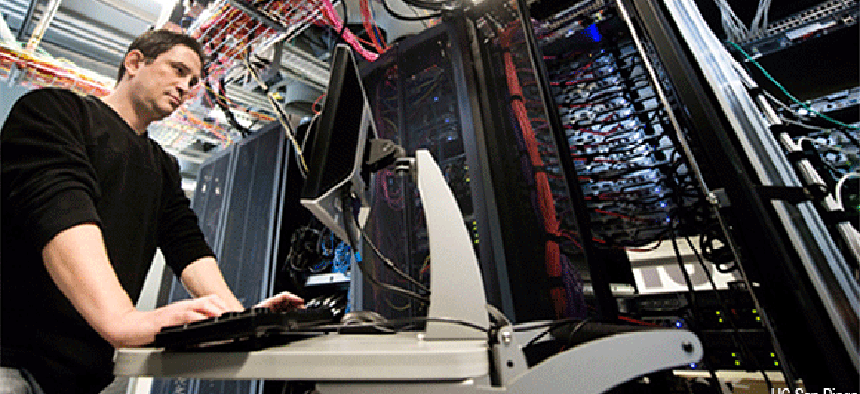U.C. San Diego's super-fast network will handle big data demands


Connecting state and local government leaders
The university, which operates the San Diego Supercomputing Center, is turbo-charging its network around a switch that can handle 1 trillion bits/sec.
How big is big data? One way to find out is to measure the speed of data over the network. On that score, researchers at the University of California at San Diego are getting set to handle some of the biggest data in the research community.
The university's Prism@UCSD project is designed to meet the demands of "data-intensive science" by building-out a high-performance network capable of supporting throughput that "might otherwise cripple the main campus network," UCSD chancellor Pradeep Khosla said in announcing the project.
UCSD researchers with the California Institute for Telecommunications and Information Technology (Calit2) are designing the network to support campus research teams working on genome mapping, climate change and some non-technical pursuits.
"The Prism network will enable rapid movement of big data for multiple, diverse disciplines across campus, including science, engineering, medicine and the arts," Khosla said. In starting Prism, the team identified big data users on campus who required at least 10 gigabit/sec capacity, which Calit2 is supplying through a next-generation modular switch that aggregates bandwidth across the university's various networks.
At the heart of the Prism network is an Arista Networks 7500 series switching platform, which carries 20 times the traffic of the university's current research network and 100 times of the bandwidth of the main campus networks, according to Prism@SDSD project leader Philip Papadopoulos. Combined capacity — including both Calit2 and the Prism networks — flowing across the switch would exceed 1 terabit/sec, or 1 trillion bits/sec, Papadopoulos said.
The network would be designed to support both real-world use, according to the university, as well as experimental applications being tested by researchers. The aim is to move the big data applications off the main campus network, which serves about 30,000 people.
“You can think of Prism as the HOV lane,” he said in the UCSD announcement, “whereas our very capable campus network represents the slower lanes on the freeway.”
By the time Prism is built out, he said, the 50 gigabits/sec link between Calit2 and the university's San Diego Supercomputer Center (SDSC) would be expanded top 120 gigabits/sec, adding, "and it won't cost very much to get it to 160 [gigabits/sec]."




